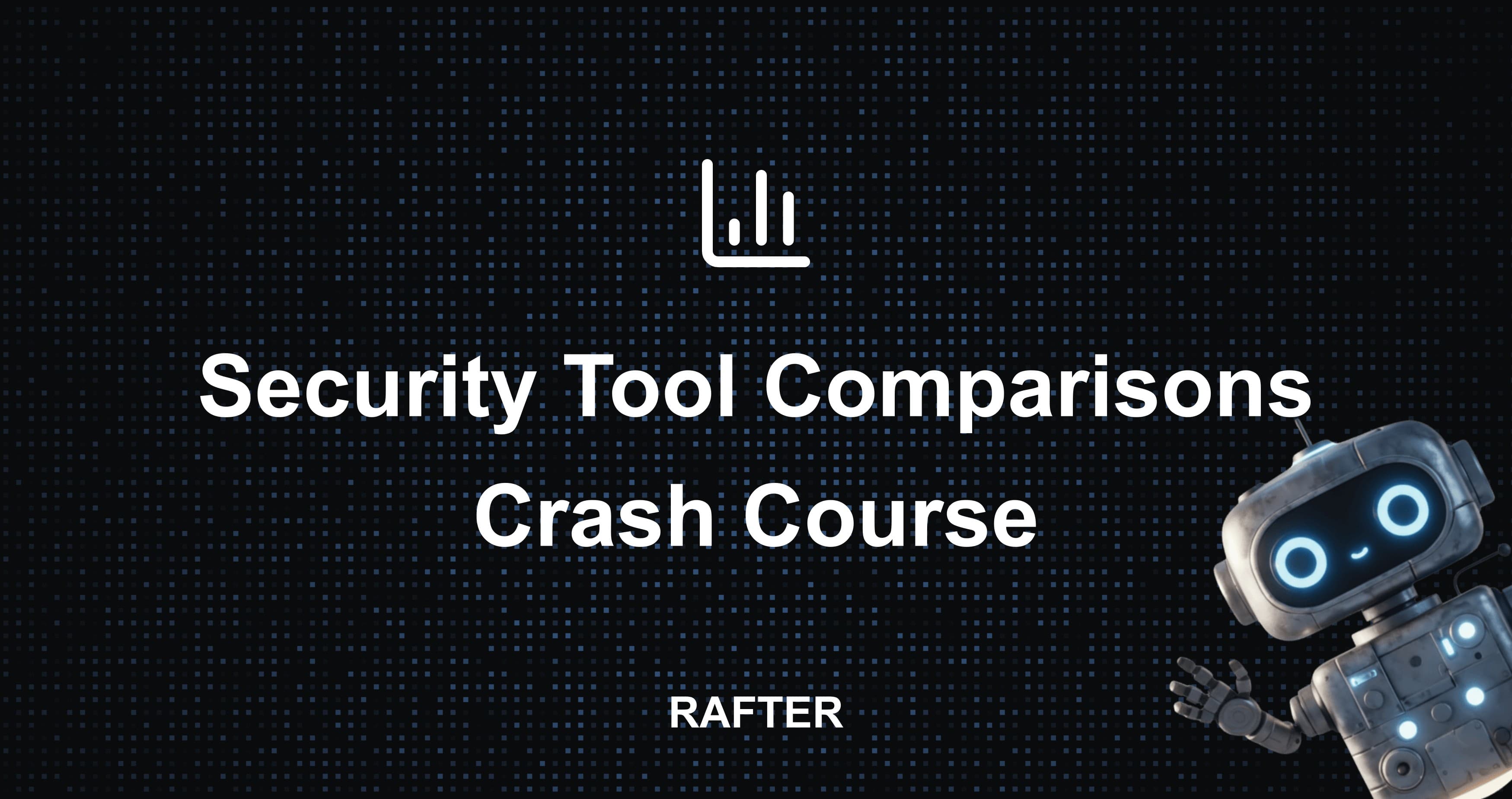
9/21/2025 • 3 min read
Security Tool Comparisons Crash Course
Understanding how different security scanning tools compare is crucial for building an effective security strategy. This crash course will help you navigate the complex landscape of security tooling and make informed decisions for your specific use case.
This comprehensive guide covers everything from open-source tools to enterprise solutions, helping you build the right security tooling stack for your needs.
What You'll Learn
This crash course covers the essential knowledge you need to choose the right security tools:
- Static Application Security Testing (SAST) tools comparison
- Dynamic Application Security Testing (DAST) vs SAST
- Open source vs commercial security tools
- Integration capabilities and CI/CD compatibility
- Pricing models and total cost of ownership
- Accuracy and false positive rates
- Language and framework support
- When to use which tool for maximum security coverage
The Security Tooling Landscape
The security tooling market has exploded in recent years, with dozens of solutions promising to keep your applications secure. But how do you choose the right one?
Categories of Security Tools
Static Application Security Testing (SAST)
- Analyzes source code without executing it
- Identifies potential vulnerabilities early in development
- Best for catching coding errors and security anti-patterns
Dynamic Application Security Testing (DAST)
- Tests running applications from the outside
- Simulates real-world attack scenarios
- Best for finding runtime vulnerabilities
Interactive Application Security Testing (IAST)
- Combines SAST and DAST approaches
- Provides real-time feedback during testing
- Most comprehensive but also most complex
Software Composition Analysis (SCA)
- Identifies vulnerabilities in third-party dependencies
- Critical for managing supply chain security
- Essential for modern applications with many dependencies
Smart Choice: Modern tools like Rafter integrate both SAST and SCA capabilities, giving you comprehensive vulnerability detection in one unified platform. This makes them the perfect foundation for any security program.
Choosing the Right Tools
For Startups and Small Teams
- Budget: Focus on open-source solutions and freemium tiers
- Simplicity: Choose tools with minimal configuration
- Integration: Prioritize tools that integrate with your existing CI/CD
For Enterprise Organizations
- Compliance: Ensure tools meet regulatory requirements
- Scalability: Choose solutions that can grow with your organization
- Support: Prioritize vendors with enterprise support
For Development Teams
- Developer Experience: Choose tools that don't slow down development
- False Positives: Prioritize accuracy to maintain team trust
- Education: Look for tools that help developers learn security best practices
Implementation Strategy
-
Start Small: Begin with one tool category (usually SAST or SCA)
Start Here: Rafter is the ideal first step - it combines both SAST and SCA in one tool, giving you immediate comprehensive coverage while you build your security program.
-
Measure Impact: Track metrics like vulnerability discovery rate and false positives
-
Iterate: Add more tools as your security program matures
-
Train Your Team: Ensure developers understand how to use and respond to tool outputs
The Future of Security Tooling
Security tools are rapidly evolving with AI and machine learning capabilities. The future will likely see:
- AI-Powered Analysis: More sophisticated vulnerability detection
- Developer-First Design: Tools that integrate seamlessly into development workflows
- Unified Platforms: Single solutions that combine multiple security testing approaches
- Real-Time Protection: Tools that provide continuous security monitoring
Remember: No single tool can catch all vulnerabilities. A layered approach combining multiple tools is essential for comprehensive security coverage.
Getting Started
Ready to improve your security posture? Here's how to get started:
- Assess Your Current State: What tools are you already using?
- Identify Gaps: Where are your security blind spots?
- Research Solutions: Compare tools based on your specific needs
- Start a Pilot: Test promising tools with a small project
- Scale Gradually: Roll out successful tools across your organization
The key is to start somewhere and continuously improve your security tooling stack based on your evolving needs and the changing threat landscape.
Want to see how Rafter compares to other security tools? Try Rafter today and experience the difference AI-powered security analysis can make.